88 Piano Classics
for Beginners
DAVID DUTKANICZ
DOVER PUBLICATIONS, INC.
Mineola, New York
Copyright
Copyright 2011 by Dover Publications, Inc.
All rights reserved.
Bibliographical Note
88 Piano Classics for Beginners is a new work, first published by Dover Publications, Inc., in 2011.
International Standard Book Number
ISBN-13: 978-0-486-48388-7
ISBN-10: 0-486-48388-6
Manufactured in the United States by Courier Corporation
48388601
www.doverpublications.com
Contents
88 Piano Classics for Beginners is a collection of beloved musical themes specially arranged for the beginning pianist. Containing works from the core piano repertoire, this book also includes orchestral and chamber favoritesand more. These delightful works have been selected not only for their playability but also for the development of essential skills. Ears and hands can grow alongside one another with selections that focus on a particular skill: e.g., parallel thirds in Delibes Flower Duet, chromatic passages in Fu ks Entrance of the Gladiators, and chorale playing in Tallis Third Mode Melody. Fingerings have been provided as suggestions and should not be considered absolute. Each individual pair of hands will know what works best. Phrasing and pedaling have been left open in order to make the music less daunting. These should be penciled in as progress is made on each selection.
ks Entrance of the Gladiators, and chorale playing in Tallis Third Mode Melody. Fingerings have been provided as suggestions and should not be considered absolute. Each individual pair of hands will know what works best. Phrasing and pedaling have been left open in order to make the music less daunting. These should be penciled in as progress is made on each selection.
adagio, very slow
adagio cantabile, very slow and songful
adagio un poco mosso, very slow with a little momentum
allegretto, moving along, but not too fast
allegretto tranquillo, moving along, but not fast, in a tranquil manner
allegro con brio, lively, with a lot of vigor
allegro molto, very fast
allegro passionate, fast and impassioned
andante, walking tempo
andante cantabile, walking tempo, in a songful manner
andante grazioso, walking tempo, in a graceful manner
andantino, a bit faster than a walking tempo
a tempo, return to the original speed
cantabile, songful
cantado, singing out
coda, a concluding section
cresc(endo), getting louder
cresc(endo) poco a poco, getting louder, little by little
dim. E rit. (diminuendo e ritardando) poca a poca, gradually quieter and slower
D. C. al Fine (da capo al Fine), return to the beginning, then go to the Fine (end)
dolce, gently, sweetly
espressivo, espr., expressive
Fine, end
f ( forte ), loud
ff ( fortissimo ), very loud
fz ( forzando ), strongly accented
ffz ( molto forzando ), very strongly accented
grazioso, graceful
largo, very slow, solemn
legato, smooth, connected
leggiero, lightly
lento , very slow (a bit faster than largo )
lento espressivo, slow and expressive
lento placido, slow and placid
L.H., left hand
maestoso, majestic, stately
marc(ato), marked, accented
mf ( mezzo-forte ), medium loud
moderato, at a moderate speed
moderato cantabile, songful, at a moderate speed
molto legato, very smooth and connected
molto marcato, very accented
molto rall(entando), held back a great deal
molto rit(ardando), slow down a great deal
molto staccato, very short and detached
mp ( mezzo-piano ), medium soft
p ( piano ), soft
pp ( pianissimo ), very soft
ppp ( pianississimo ), very very soft
poco a poco, little by little
poco cresc. E. rall ( entando ), slightly getting louder and held back
poco rall(entando), slightly held back
poco rit(ardando), slowing down a little
rall(entando), held back
rall(entando), poco a poco, held back little by little
rall(entando), E dim. poco a poco, held back and getting quieter little by little
R.H., right hand
ritardando, slowing down
sempre sostenuto, always sustained
sfz ( sforzando ), strongly accented
sostenuto, sost., sustained
tempo di valse, a waltz
tranquillo, tranquil
vivace, very fast, lively
88 Piano Classics
for Beginners
17141788
Carl Philipp Emanuel was the son of the monumental Johann Sebastian Bach. He and his other brothersJohann Christian, Wilhelm Friedemann, and Johann Christoph Friedrichall inherited their fathers wonderful talent and were musically famous in their own right. In this work, be mindful of the dialogue between the two hands, and use the borrowed fingerings (written above the left hand) to ease some passages.
Moderato
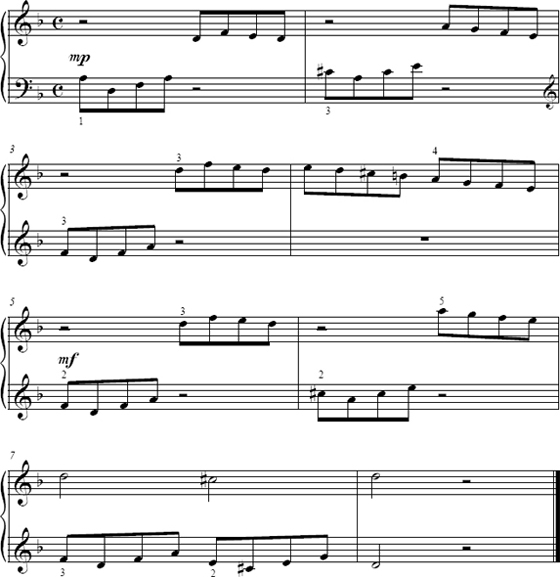
16851750
An arioso is a short piece, usually found in a cantata, where a story is sung by a solo singer. Keep the slow Largo tempo consistent, and try to shape the phrases as a singer would.
Largo
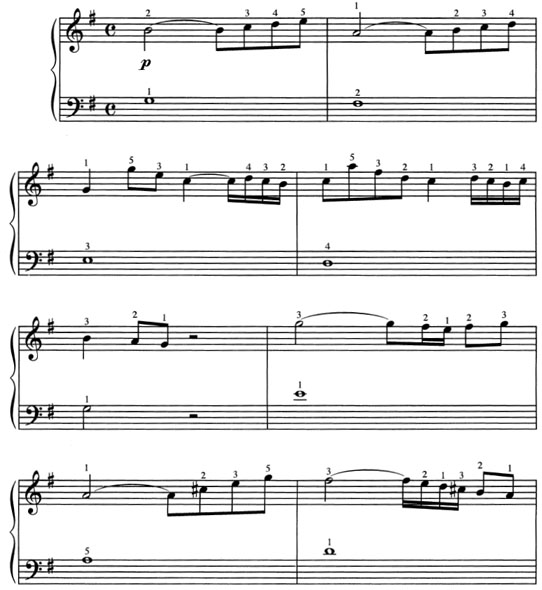
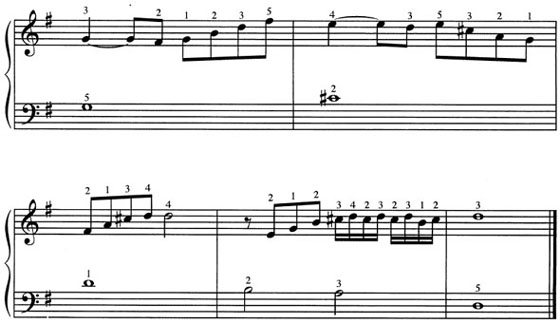
16851750
Bach composed six magnificent concertos for the Prince of Brandenburg. This melody is the opening of the second movement of the fifth. It is marked as affetuoso, meaning affectionate.
Moderato

16851750
This excerpt from the Brandenburg Concertos opens with a dialogue between the right and left hand. Keep the tempo steady so that the melody is uninterrupted. Also, use the left thumb on the repeated Ds to ease the right hand.
Moderato

16851750
This charming piece was found in a notebook of music Bach had written for his wife, Anna Magdalena. Some of the pieces were for teaching, but most were small gifts. Keep the mood merry and light.
Andante
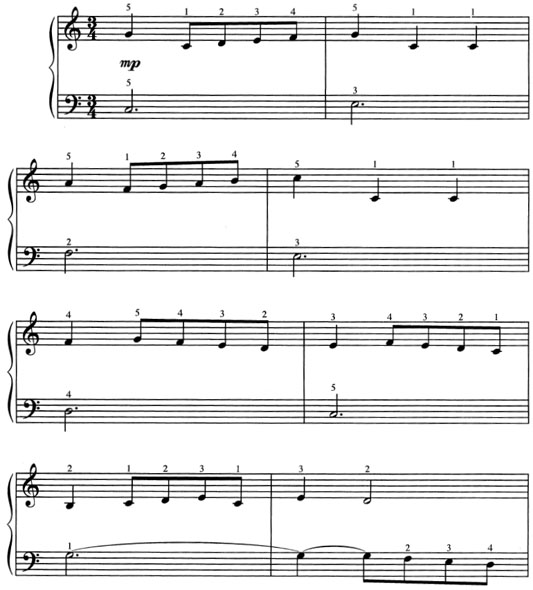
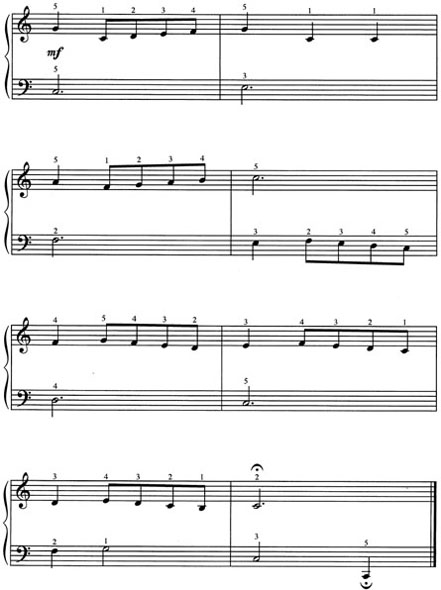
16851750
Just like the other Inventions, this one was written to instruct new pupils. Here, Bach presents a challenging arpeggio workout. The music should flow evenly, helped by smoothness in the wrist and fingers.
Moderato
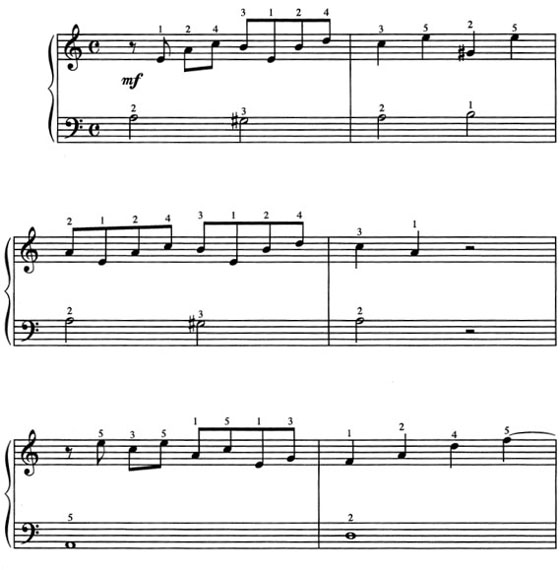
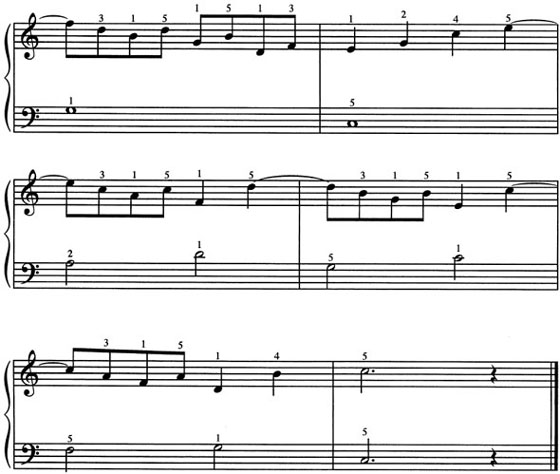
16851750
This wonderful melody is taken from a church, and translates into Sleepers Awake. Keep a firm hold on the tempo dont let the dips in melody slow you down. For the full effect, use dynamics to contrast different moods.



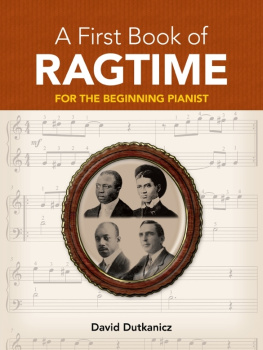
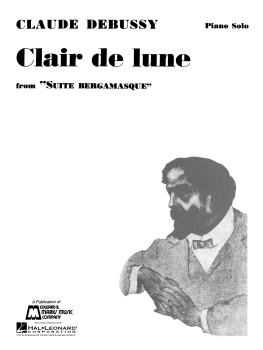
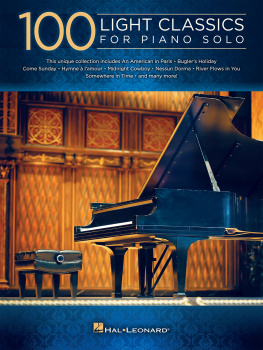
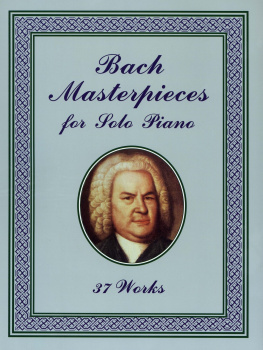

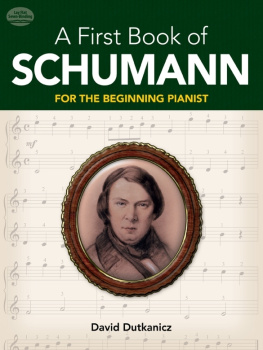
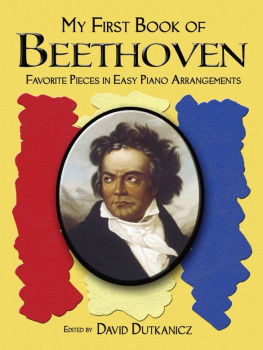
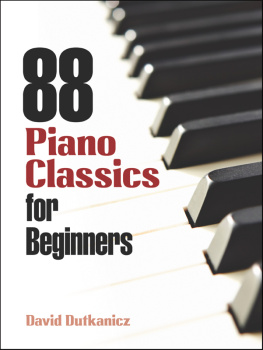


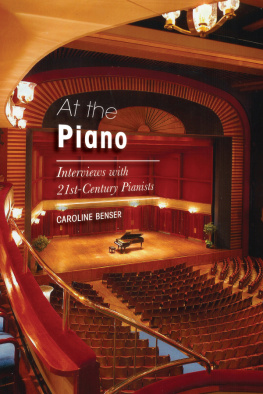
 ks Entrance of the Gladiators, and chorale playing in Tallis Third Mode Melody. Fingerings have been provided as suggestions and should not be considered absolute. Each individual pair of hands will know what works best. Phrasing and pedaling have been left open in order to make the music less daunting. These should be penciled in as progress is made on each selection.
ks Entrance of the Gladiators, and chorale playing in Tallis Third Mode Melody. Fingerings have been provided as suggestions and should not be considered absolute. Each individual pair of hands will know what works best. Phrasing and pedaling have been left open in order to make the music less daunting. These should be penciled in as progress is made on each selection.







